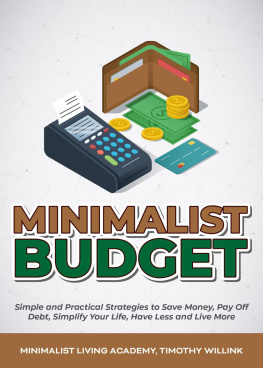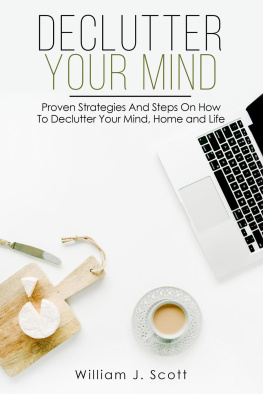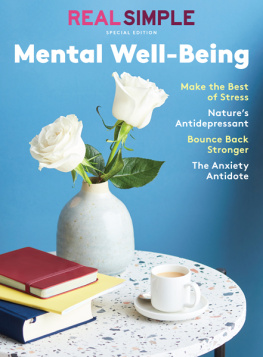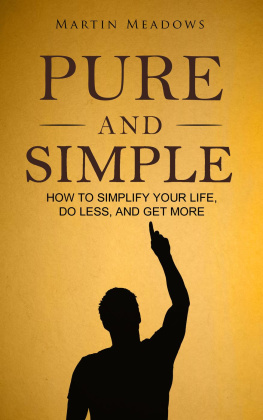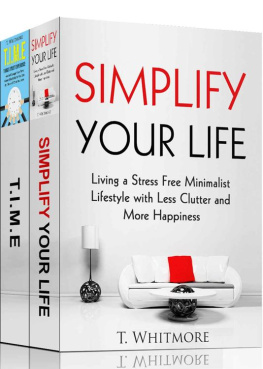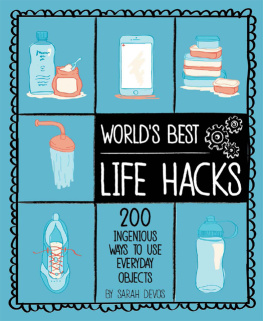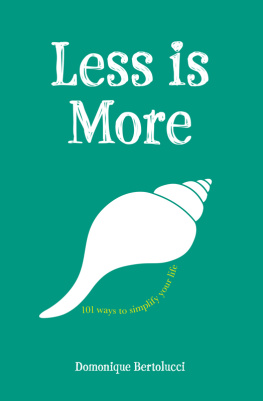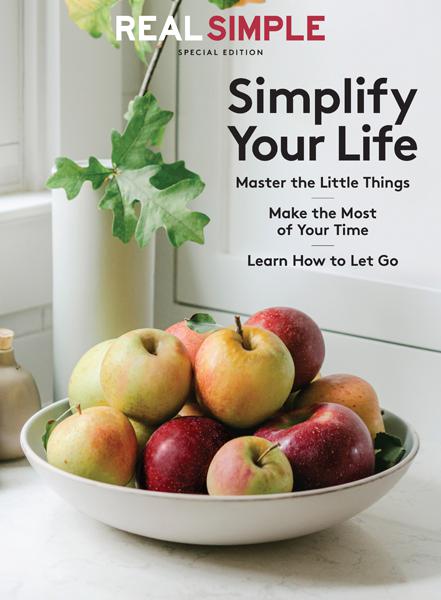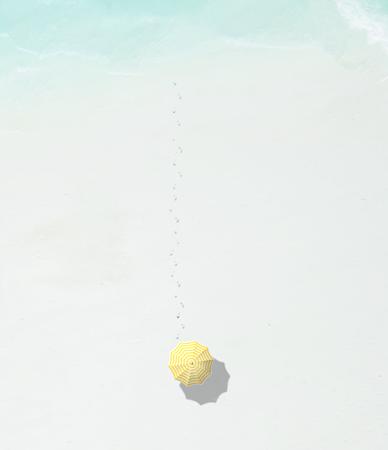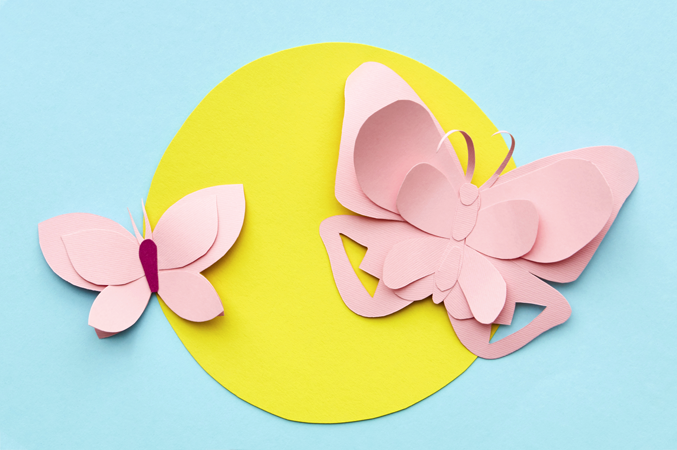CONTENTS
essential joy
The Smallest Things Will Make You Happy
The secrets to getting more joy out of your days.
Spread Too Thin?
How to regain control when youre expected to do so much.
Help, in Its Many Forms, Can Yield Bountiful Fruits
What you learn when you accept a friendly offer of assistance.
What Ever Happened to Boundaries?
From social media to Zoom, our privacy is being invaded.
It Feels Good to Be Frugal
Many of us are spending lessand discovering we dont mind the changes.
Why Are Little Decisions So Hard?
The problem may lie in the abundance of choices you face.
a streamlined space
Less Is More
Four women who downsized discuss their motivations, challenges, and rewards.
How the Organizers Organize
Pro tips for whipping your rooms and closets into shape.
Storage Strategies to Make Life Less Stressful
Follow these hacks, and bring instant order to your home.
How to Ruthlessly Edit Your Life
Make peace with every keep it or toss it decision.
Let Go of the Things, Hold on to Their Meanings
An archaeological approach to clearing out a house.
End the Chore Wars
Heres your guide to drafting kids into the fight against mess.
Degunk Your Devices
Great ways to clean electronics.
me time made simple
If You Do One Thing for Your Health
Weve got the single best advice for your heart, your bones, your immunity, your diet, and more.
The Sleep Commandments
Thou shalt not toss and turn all nightif you prep properly for bed.
Yoga Stretches That Melt Muscle Tension
These basic poses target stress in your neck, back, and hips.
Bare-Minimum Beauty
Spend less time, use fewer products. Get the same glow.
Just Move!
Wherever you are, whatever youre doing, you can get some exercise out of it.
Super Simple Meals
Recipes for three fast, fresh, and nourishing dinners.
The Last Word
CHAPTER
ESSENTIAL JOY
HAPPY IN SMALL WAYS / THE ART OF NO / REMOTE-LIFE ZEN
The Smallest Things Will Make You Happy
Its the little moments that bring real joy, according to happiness researchers. From chatting up a stranger on the bus to gawking at clouds, here are easy ways to get your fill.
BY GINNY GRAVES
SURE, THE PURSUIT of happiness is guaranteed in the Declaration of Independence, but the Founders couldnt promise that wed know the right way to go about that pursuit. Those juicy rewards we think of as the happiness jackpota prestigious promotion, a new car, a winning lottery ticket? They make us happy temporarily, but the feeling doesnt last as long as wed expect, says Laurie Santos, PhD, a cognitive scientist and professor of psychology at Yale University.
Joy wanes naturally thanks to a phenomenon known as hedonic adaptation. Thats a fancy way of saying we get used to stuff, even great stuff, says Santos, whose popular happiness class at Yale has been adapted into a Coursera program called The Science of Well-Being. You buy a new house, and its cool for a little while, but then it becomes normal and its just your house.
More sustainable happiness lies not in those big exhilarating events but in the everyday moments that connect us to others, foster compassion and gratitude, and help us see ourselves as part of a larger whole. That feeling takes effort, says Jay Kumar, PhD, author of Science of a Happy Brain: Thriving in the Age of Anger, Anxiety and Our brains arent wired to seek happiness, theyre wired to look for threats as a survival strategy, he explains. To overcome that built-in negativity bias, you have to actively register the good moments. And by doing so routinely, you can rewire your brain to be more upbeat overall.
Think of happy living as a daily practicea scavenger hunt for small joy. Its something that you begin doing deliberately but becomes more automatic. Start with these eight science-proven ways to find joy in the most ordinary of days.
Greet a stranger in an elevator.
Or in a dog park. Or on the bus or train. Several years ago, researchers asked random people entering a busy coffee shop to do one of two things: have a friendly interaction with the barista or make the coffee-buying transaction as brief and efficient as possible. During interviews with participants as they left the shop, the researchers discovered that those who smiled, made eye contact, and had a brief interaction with the barista were in a better mood than people who sped through. Humans have a fundamental need to belong, to feel accepted and integrated into our communitiesand having pleasant interactions with strangers fills that need, says Iris Lok, a doctoral candidate who worked on the study. If you intentionally avoid engaging with people you dont know for fear a friendly foray might be rebuffed, theres good news: Most people are more receptive than youd think. In one study, researchers asked people taking public transitnot known as the friendliest settingto strike up a conversation with a stranger, and nearly everyone responded positively, says Lok. Research shows that making eye contact and greeting strangers can bolster your sense of belonging and happinessand give their mood a lift too.
Imagine youve lost something or someone you love.
You may be thinking, Wait, what? Stay with us. Negative visualization is an old-school happiness-boosting technique that dates back to the stoic philosophers of ancient Greece and Rome, says Santos, and modern science has validated its effectiveness. In one study, researchers found that people who wrote about the various ways in which a positive event might never have happened were happier afterward than those who wrote about how a positive event came to occur. In a similar study, folks who wrote about how they might never have met their romantic partner said they were more satisfied with their relationships after the exercise than those who wrote about how they met their partner. One reason negative visualization is uplifting: It fosters gratitude and appreciation for the good things in your life, and gratitude reliably promotes happiness. When you imagine youve lost things you valueyour job, your spouse, your friendsit also helps you see that life is impermanent and recognize how fortunate you are for what you have in the moment, says Santos, who used the technique when she sprained her ankle last year and couldnt walk for a few days. I started thinking about the time I broke my kneecap and was out of commission for six months, which made me appreciate what I could still do and lifted my mood, she says.


